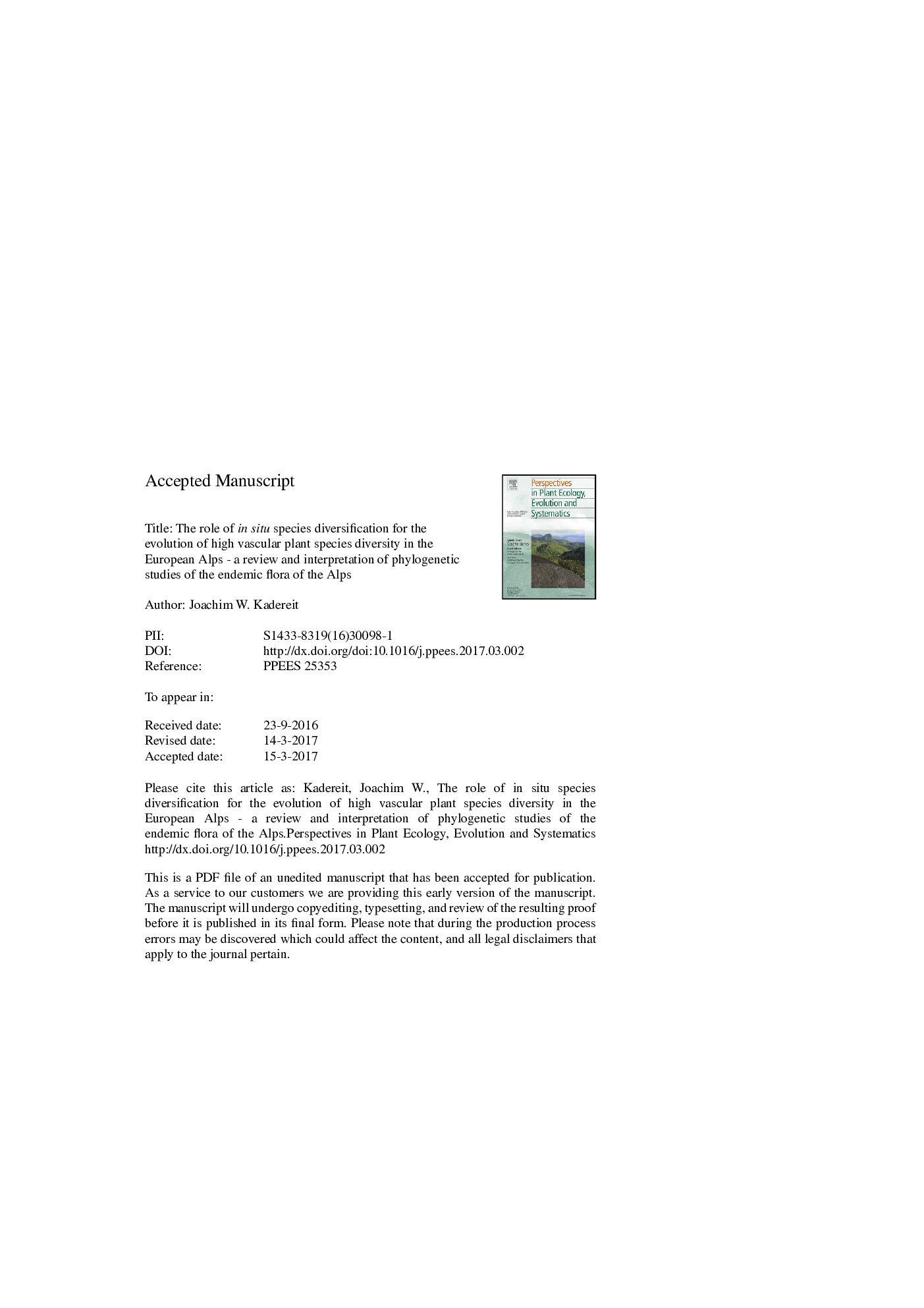| Article ID | Journal | Published Year | Pages | File Type |
|---|---|---|---|---|
| 5744949 | Perspectives in Plant Ecology, Evolution and Systematics | 2017 | 26 Pages |
Abstract
By harbouring ca. 3500 native vascular plant species in an area of ca. 170 000Â km2, the European Alps represent a region of very high species diversity. Using the most recently published flora of the area and phylogenetic literature, I here review which proportion of the endemic flora of the Alps is the result of in situ diversification, i.e., of diversification in the area and (largely) restricted to the area. There exist only very few and mostly species-poor species diversifications in the Alps, accounting for ca. 1.2% of the native and for ca. 9% of the endemic flora of the Alps. In contrast to this, ca. 33% of the endemic species of the Alps belong to lineages widespread in the European Alpine System (EAS), comprising mainly the Pyrenees, Apennines, Carpathians, Dinarids and Balkans, in addition to the Alps. The rarity of Alpine species diversifications is hypothesised to reflect the Quaternary climatic history of the Alps where massive and repeated glaciations prevented the undisturbed evolution of species-rich lineages.
Related Topics
Life Sciences
Agricultural and Biological Sciences
Ecology, Evolution, Behavior and Systematics
Authors
Joachim W. Kadereit,
